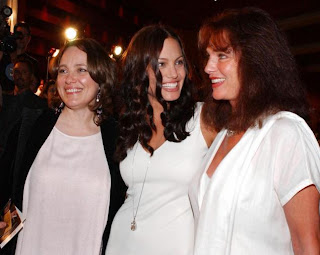a perspective:
in reference to Angelina Jolie's article,
in New York Times, May 14, 2013.
-------------------------------------------
Hollywood superstar Angelina Jolie's
emotionally appealing article
in New York Times
has made ripples in mind !!
Her revealing is an appropriate attack..
on the age-old male obsessive concept of
attraction and beauty for female,(Angelina)
which has been centralized to the organ specific.
This has been so cruelly established
in psychology of humans,
as a scale of female beauty
in their sub-conscious mind.
on the age-old male obsessive concept of
attraction and beauty for female,(Angelina)
which has been centralized to the organ specific.
This has been so cruelly established
in psychology of humans,
as a scale of female beauty
in their sub-conscious mind.
It is this
organ-obsession..
which has affected all the art forms,
since our earliest period of civilization !!
organ-obsession..
which has affected all the art forms,
since our earliest period of civilization !!
Look at the stony sculpture
and
drawings in old caves !!
Even camera has always been an instrument
of the eye
in the hands of licentious males.
When camera is centered to eye
contrary to the brain,
it has always materialized
into foolish and harmful results.
 |
| My medical choice, The New York Times.By
ANGELINA JOLIE Published: May 14, 2013 share courtesy http://www.nytimes.com/2013/05/14/opinion/my-medical-choice.html |
A human is not the sub total of his/her organs....
it is something more to it.
it is something more to it.
Peelings of an onion is not the onion.
Peel off all the layers....
smell still remains there,
and that's the essence of of it's existence.
Likewise..
essence of any human is beyond it's organs.
 |
Actress Angelina Jolie revealed she recently had a preventative double mastectomy and her breasts surgically reconstructed. share courtesy: http://www.nydailynews.com |
 |
Marcheline Bertrand, mother of Angelina Jolie, passed away from ovarian cancer at 56, following a 10-year battle with the disease. share courtesy: http://www.nydailynews.com |
 |
Angelina Jolie told her six children they need not fear any longer that their mom will fall victim to the deadly disease. share courtesy: http://www.nydailynews.com |
 |
Angelina Jolie credits Brad Pitt for being by her side the entire time she underwent procedures. share courtesy: http://www.nydailynews.com |
 |
Angelina Jolie's father, actor Jon Voight hugs her mother, Marcheline Bertrand, at the Filmex Film Festival, Los Angeles, California in this undated photo. share courtesy: http://www.nydailynews.com |
 |
Angelina Jolie opted for the surgeries because she carries a gene that puts her at an 87% risk of developing breast cancer. share courtesy: http://www.nydailynews.com |
 |
Angelina Jolie, seen here with Brad Pitt, only has a 5% chance of developing the disease following the procedures. share courtesy: http://www.nydailynews.com |




























